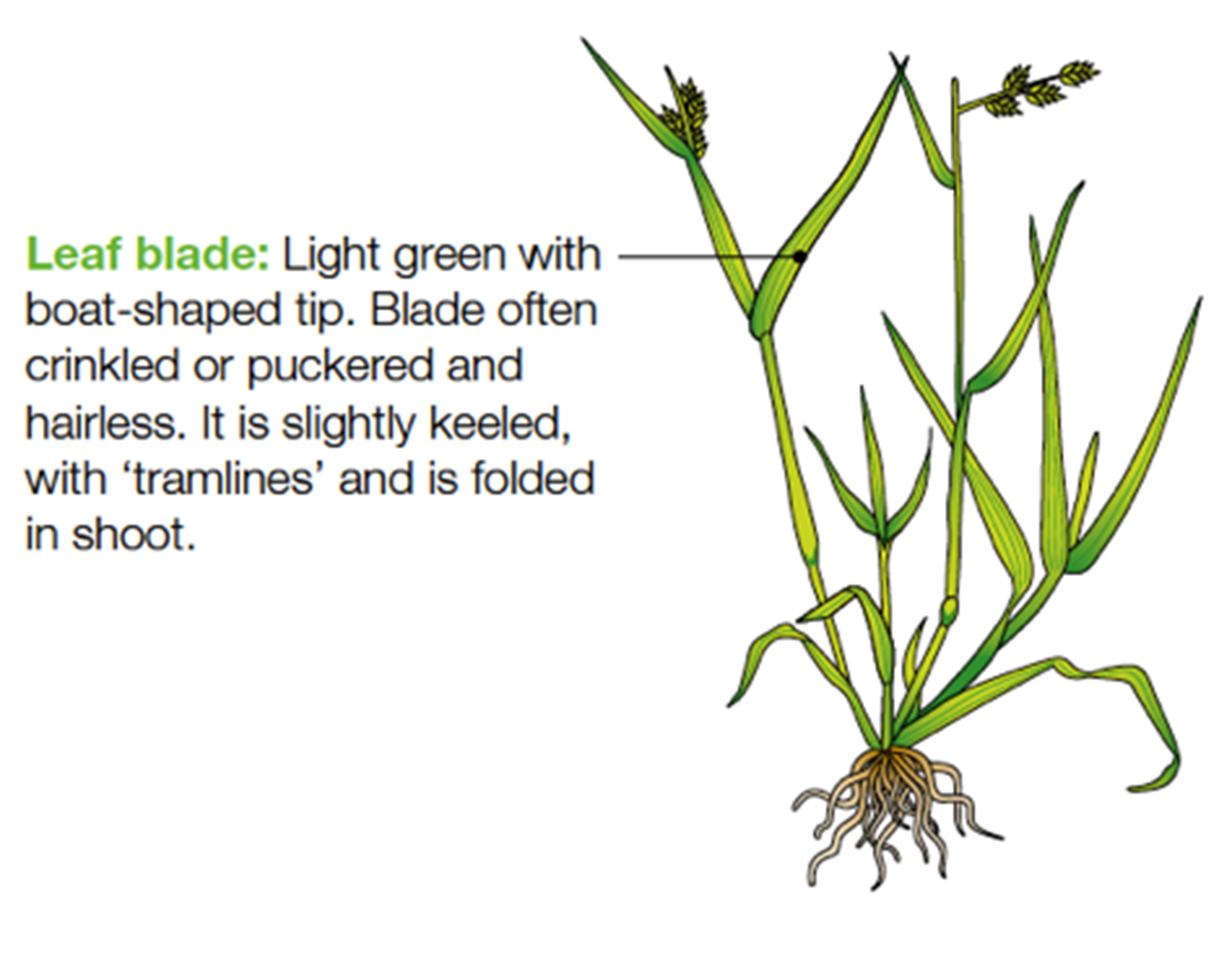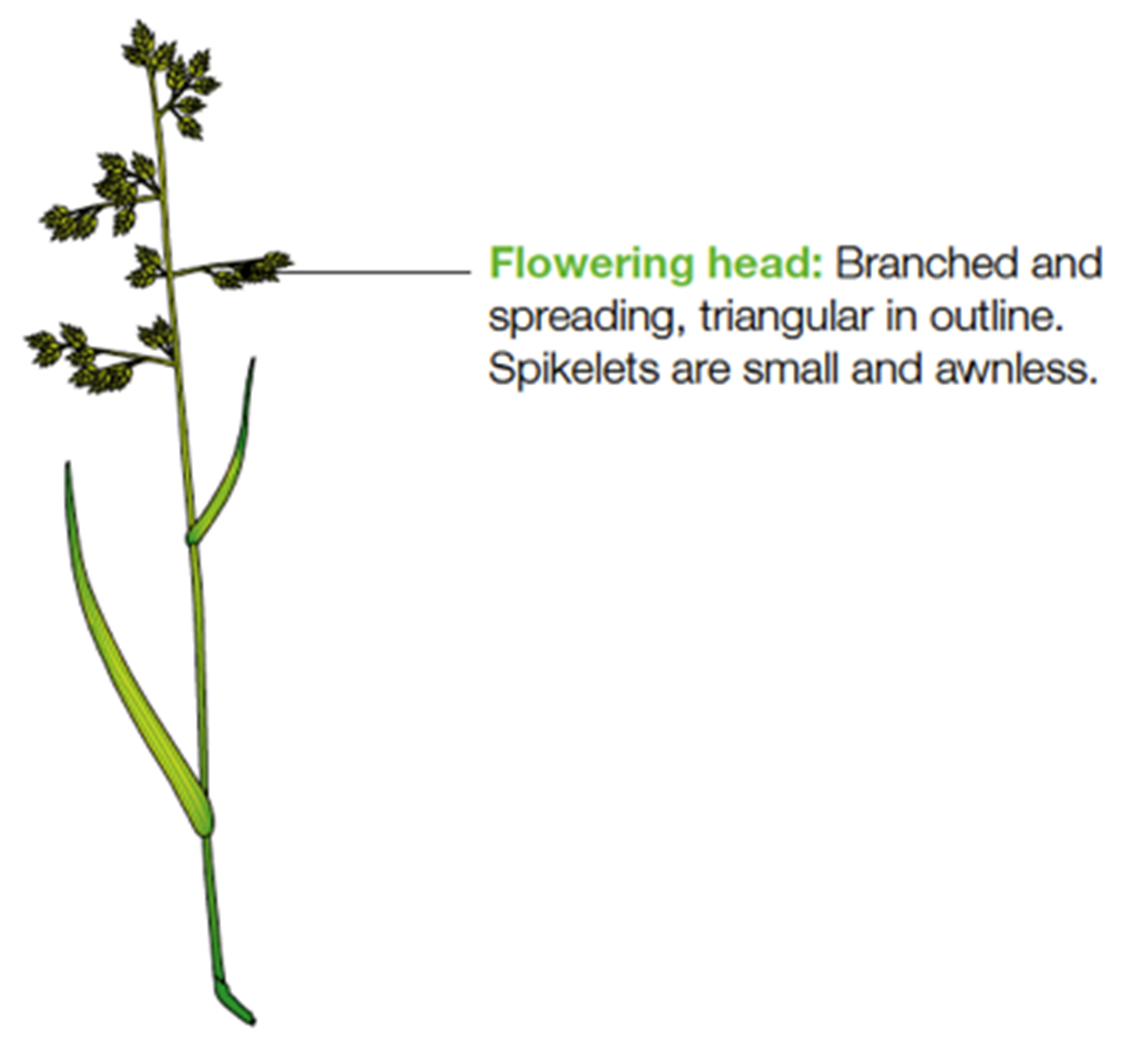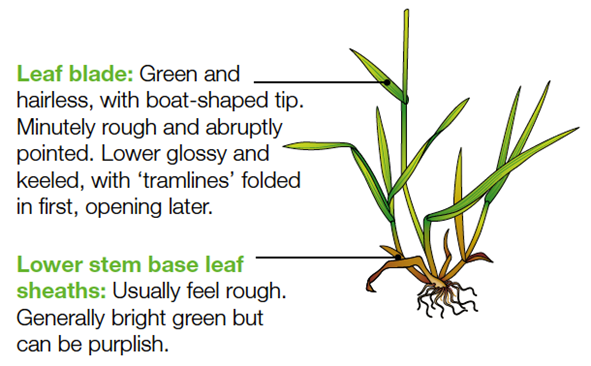Annual meadow-grass growth habit and life-cycle
Despite its name, in the UK annual meadow-grass exists as both an annual and short-lived perennial but in arable situations it is usually an annual plant. It germinates throughout the year, with the period of maximum emergence from April through to September, the latter being the optimum time, possibly due to more reliable soil moisture.
The minimum temperature for germination is 2–5˚C, optimising from around 7˚C, through to a high of 35˚C. Emergence also increases with increasing soil moisture (up to a maximum of 40% of field capacity. Dry conditions however delay emergence.
Once established, it forms either a loose or compact erect, tufted plant and will flower within 44–55 days of germination. Because it flowers and seeds throughout the year, both emerging and flowering plants can sometimes be seen in close proximity to each other.
Although annual meadow-grass flowers independently of day length, seed head production is at its maximum in May and June, with seeds becoming viable only 1-2 days following pollination is capable of producing large numbers of seeds; a single plant may produce up to 13,000 seeds or more under favourable circumstances.
Annual meadow-grass can be found in winter cereals from autumn onwards, frequently on the headland areas of fields. It is also a rapid coloniser of set-aside land. It does not thrive under drought or very acid conditions, or in soils low in phosphates.
ID Images – Annual meadow-grass








